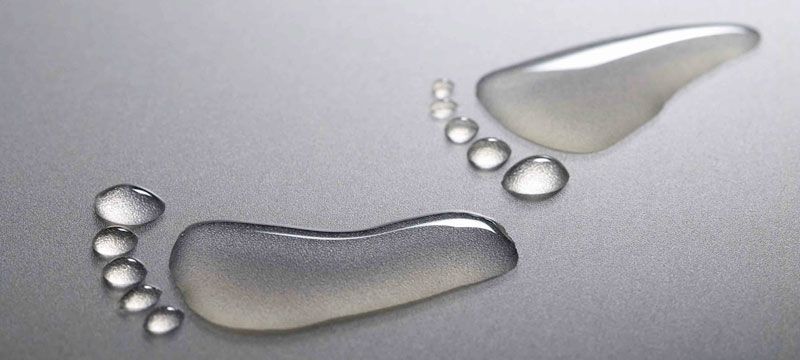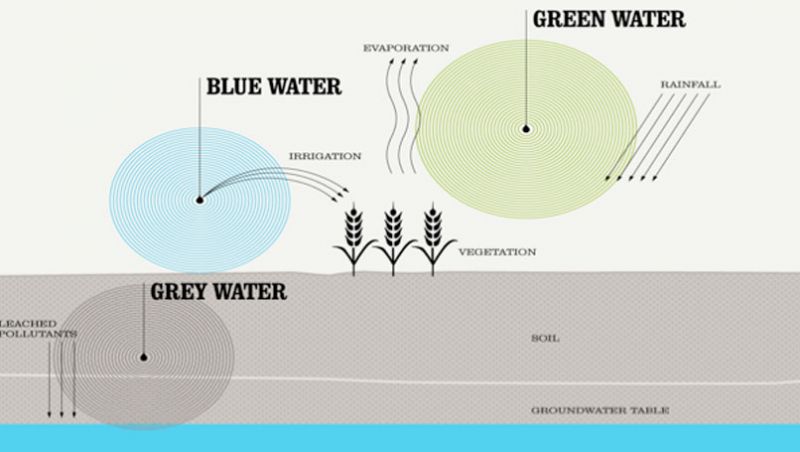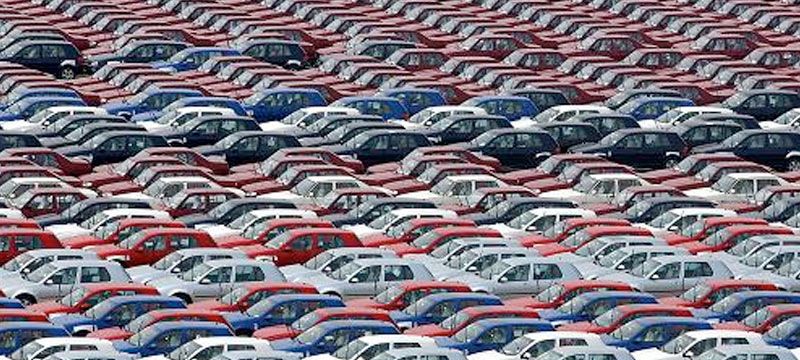Water Footprint: A New Paradigm for Our Fresh Water Future
Published on by Peter Neill, Director, World Ocean Observatory in Business
To solve the fresh water problem we must first understand how much water is available and how it is being used.

The new water paradigm should begin not at the top of the user pyramid, but at the bottom. It needs a better calculation of our own water footprint, a measure of the amount used to produce each of the goods and services we use, directly and indirectly, including “virtual” water and externalities.
There is an excellent online tool to help us understand this process—the Water Footprint Network , founded in the Netherlands by Professor Arjen Hoekstra, and intended to assist individuals, companies, municipalities, and governments with water assessments, to design stewardship plans, and to offer training for new methodologies and project implementation under this new aqua-centric approach.
The Water Footprint Network assesses three types of water as follows:
Green water footprint is water from precipitation that is stored in the root zone of soil and evaporated, transpired or incorporated by plants. It is particularly relevant for agricultural, horticultural and forestry products.
Blue water footprint is water that has been sourced from surface or groundwater resources and is either evaporated, incorporated into a product or taken from one body of water and returned to another, or returned at a different time. Irrigated agriculture, industry and domestic water use can each have a blue water footprint.
Grey water footprint is the amount of fresh water required to assimilate pollutants to meet specific water quality standards. The grey water footprint considers point-source pollution discharged to a freshwater resource directly through a pipe or indirectly through runoff or leaching from the soil, impervious surfaces, or other diffuse source.

Each of these requires an evaluation and strategy particular to use, place, and time for an individual, a business, a product, or a nation using a standard that, according to the Water Footprint Network website, “has been applied and tested worldwide across many sectors and includes detailed instruction and guidance on the following:
- How to calculate the green, blue and grey water footprint to understand the geographic and temporal allocation of water resources for industry, agriculture and domestic water supply;
- How to conduct a water footprint sustainability assessment which includes criteria for understanding the environmental sustainability, resource efficiency and social equity of water use, for both consumption and pollution;
- How to use the results of the water footprint accounting and sustainability assessment to identify and prioritize the most strategic actions to be taken in local, regional, national and global scales, individually and collectively.
The Network provides an extensive data site, called WaterStat, a comprehensive collection of research and statistics about international, national, and product water footprints, as well as scarcity and pollution against which to compare baselines and set objectives. The website also makes available a free online assessment tool that allows the user to complete both a geographic assessment to explore the water footprint of a river basin, its sustainability, and ways to reduce consumption; or a production assessment to quantify and map operational and supply chain water footprints of a specific facility or product, to maintain sustainability, and to identify ways to reduce use going forward.
I admit it is facile to suggest such a radical change to how we interact with all elements of the water cycle without understanding the who, what, where, and how such actions are implemented down to the lowest level of use or production. But there is a vast community of water scholars and hydraulic engineers available for such research, planning, design, and organization, that must be reprogrammed and reassigned to this new way of measuring and assuring the value of water as an organizing principle of a new society.
Why not try it for yourself? Go to waterfootprint.org and use the personal water footprint calculator.
So what is the real cost of all that water that is typically under-valued in general and by the resultant negligible price factored into the accounting of what is purchased as raw material, transformed, and sold?
The Water Footprint Network has conducted studies of specific manufacturing operations in an attempt by some corporations to understand the true environmental impact of production. Volkswagen provides an astonishing case study wherein it began to analyze the freshwater consumption of three specific car models—Polo, Golf, and Passat—along with their product life cycles on both inventory and impact assessment levels.
I could not find the actual number of gallons of fresh water required to produce the Passat you may drive, or the additional water that it takes to maintain your car with parts and service, to operate it over so many thousands of miles, or even to discard or recycle it at the end of a lifetime of use.
But let’s think of it this way:
Every vehicle consumes 90% of its water use in its production. Parts manufacture and assembly take place in over 40 countries, in each case dependent on the water supply available then and there and thereafter wasted or unavailable for alternative use such as hygiene or agriculture. In your mind, if you begin with the idea of a few gallons of water to support the production of one small part, and then incorporate that part, and that water, into the total flow of a single assembly, and then add that assembly to other assemblies similarly water dependent, and then integrate all those pieces—transportation, chassis, engine, systems, tires, lubricants, and fuels—into a fully aggregated volume of water flow, what began as an insignificant amount has now grown into a tsunami of water required to put just one Passat on the road. Now multiply by models and years and brands and numbers of cars owned, and you might drown in the sea of water captured by just one aspect of our global system of manufacture and consumption.

Now consider this: if climate and irresponsible water use and management further delimit the amount available for all uses just in the critical climate and under-supply we know today, what will the inevitable change in water valuation and consequent increase in price mean for the cost of a Volkswagen or anything else on earth? It will simply be unaffordable. Just as for years we have been living the delusion of endless fossil fuel supply, we are now living in an even more devastating delusion of endless fresh water. What has been seemingly a dream is becoming a nightmare, and we have no alternative but to wake up, face reality, and change assumptions and behavior along the full systemic extent of the water cycle.
To solve the freshwater problem we must first understand how much water is actually available, how much we use, to what purpose, using what system, in what condition, and with what realistic capacity given rapid climate change and its visible and continuing catastrophic effect.
The answer is complicated and can only be found in the understanding of “watermarks,” measures of use at every level of supply and demand—for the individual, for separated uses, or uses not heretofore integrated or included in the general calculation for corporate manufacture and processing, and for the externalities of virtual water as hidden in almost every product that affects our lives.
Even if these disparate elements are recognized, measured, and integrated into a larger discussion, the problem still cannot be solved without first addressing the larger national policy question and a revolutionary new governance approach that, taken together with complementary international policies, adds up to a global solution.
This is not an easy process. There are many difficult questions and no easy answers. But when, as today, cities like São Paulo, San Francisco, and Bangkok are exhausting their drinking water supply, when the reservoirs and rivers run shallow or dry, when the water dependent crops cannot grow, when we can no longer stay clean or healthy, then this problem will find its urgent, irrefutable logic and we will change the “watermarks” we know today dramatically and forever.
- - -
Water Footprint is an excerpt from "The Once And Future Ocean: Notes Toward a New Hydraulic Society" published in April, 2016.
Media
Taxonomy
- Public Health
- Water Footprint
- Research
- Water Footprint Research
- Environment
- Water Supply
- Consumption
- Finance and Markets
- Manufacturing
- Engine Plants
- Transmission Plants
- Assembly Plants
- Water
- Renewable Water Resources
- Process Manufacturing
- Water & Wastewater
5 Comments
-
Hello
The problem of fresh water that must be differentiated from drinking water is not in its use. But well after its use in the dispersion of contaminated water in the environment
The more polluted this fresh or drinkable water is, the more this pollution will permeate the underground reserves the groundwater
On the other hand, it is good that you explain how drinking water is made. Many people believe that the rain comes to breathe the ground water. If it were true the poor nature reserves of our soil would be totally polluted by the modern world
-
Indeed very interesting and useful approach & guidelines; facts are better than dreams and talks only. "Cause & Effect"
-
Very interesting and useful article.
-
Very relevant.
-
Very revealing and thought provoking article. Nations and communities have to open their eyes towards the impending water scarcity and the challenge ahead.
1 Comment reply
-
Hello
Many organizations are addressing the issue. All international bodies have received information: what do they do? nothing.
Why? Simply because they have no solution. The system in place for ages has brought us to this situation. This implies that this system can do nothing but plunge us into the catastrophism of the shortage of drinking water with in front of the instances having the EYES wide open but in the immobilism of any action
I am one solution among many others: they have received the communication. What are they doing ? Nothing, however, is of no great importance for action, everything must be accepted.
-